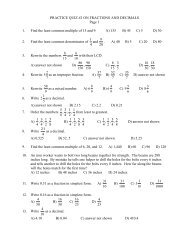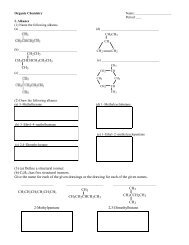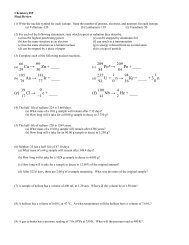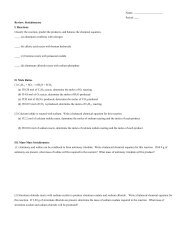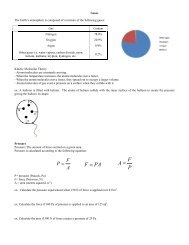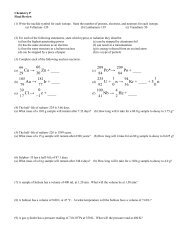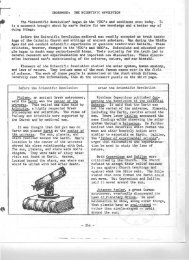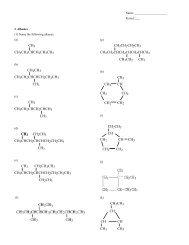- As a result, the new southern state constitutions were more democratic. Furthermore, at least initially, theRepublicans [some blacks, too] were elected to serve in their new governments.- In power, the Republicans strove for legitimacy by being lenient on ex-Confederates and not going beyondequality before the law with regard to rights for blacks. This would eventually lead to their downfall as it failedto secure white support and simultaneously alienated black voters.- The one area where all sides in the South found agreement was economics: Reconstruction lawsencouraged investment/industrialization, which helped in some cases but also increased corruption anddrew money away from other programs.- Not all areas of economics were as easy to settle, however, as the question of land redistribution was veryimportant to blacks but was not attended to by the Republicans.*The Conservative Response to Reconstruction*- Sadly, w/o a stable base of support, it didn’t take very long for white supremacists to once again begin todominate Southern government. Conservatives exploited several aspects of Reconstruction in order toregain control, such as: The myth of “Negro Rule” – to unite whites, conservatives represented the new Republicangov’ts as oppression of whites by ignorant blacks. This was far from true, as e/t blacksparticipated, they were by no means a majority and were very effective. “Carpetbaggers” & “Scalawags” – conservatives attacked the allies of black Republicans bydenouncing whites from the North as carpetbaggers [greedy, corrupt businessmen trying totake advantage of the South] and labeling cooperative Southerners as scalawags. Tax policies – b/c the civil war destroyed much of the South, Reconstruction gov’ts had to raisetaxes substantially, a fact the conservatives used to draw support away from the Republicans,especially among the yeoman farmers. Corruption – this one was often true, for there were many fraudulent schemes going on allthrough the country during Reconstruction. However, conservatives made it seem like it was allthe fault of the Republicans and blacks. Violence – white supremacist organizations like the KKK [Ku Klux Klan] persecuted blacks andRepublicans in order to sabotage Reconstruction gov’ts and reestablish the power of theplanter aristocracy.- Additionally, the Republicans suffered from factionalism along racial and class lines.*The Election of 1872 and Grant’s Second Term*- In response to increasing violence in the South Congress passed two Enforcement Acts and an Anti-Klan Law in 1870/1871. But e/t the laws made actions against the civil rights of others criminal offenses andprovided for election supervisors, martial law, and the suspension of habeas corpus when necessary,prosecutors didn’t really use the laws very much.- Therefore, Klan violence continued [even after the organization officially disbanded, others took its place]and some Democrats even challenged the laws on the basis of states’ rights.- Another problem for the Republicans was that in 1872 a part of the party split off into the LiberalRepublicans and nominated Horace Greeley. The LRs were united by their lack of support for interventionin the South and an elitist, anti-regulation/free-market attitude. The Democrats also nominated Greeley, whoran on a North-South reunion type platform.- Nevertheless, in the Presidential Election of 1872 Grant won out, but his popularity plummeted rapidlyinto his second term, largely due to a series of poor appointments and corruption scandals involving highranking administration officials. Consequently, in 1874 the Democrats took over in the House. This was thebeginning of the end for Reconstruction…*The Reversal of Reconstruction*- Even prior to the Democratic recapture of the House, several laws had been passed that severelyweakened Reconstruction. For instance, in 1872 an <strong>Am</strong>nesty Act had been passed which pardoned mostof the remaining ex-Confederates. And e/t a Civil Rights Act was passed in 1875, it had no provisions forenforcement and was later destroyed by the SC anyway.- For reasons discussed above, Democrats regained control of the South pretty quickly and even won majorinfluence in the North b/c by the 1870s the North was losing interest – a nice way of saying that they didn’tgive a crap anymore, esp. after the market crash in 1873, which brought another whole set of issues up andmade class conflict overshadow some of the existing racial issues.- Another thing that had a big impact on the ultimate failure of Reconstruction was the Supreme Court. Inseveral cases the SC ruled against Reconstruction…42
The Slaughter-House Cases (1873) – in these cases, the SC basically killed off the 14th<strong>Am</strong>endment by declaring that state and nat’l citizenship were two different things and that thelaw only dealt w/a few particular rights. So, the nat’l gov’t was not allowed to oversee civilrights in the states, which had been the whole point of the law in the first place!Bradwell v. Illinois (1873) – this case dealt w/a female attorney who claimed that the 14th<strong>Am</strong>endment defended her against discrimination. However, the SC did not agree and made(hear this!) an argument about the “woman’s place in the home.”US v. Cruikshank (1876) – this ruling hurt the enforcement clause of the 14th <strong>Am</strong>endment byonce again declaring that the duty of protecting citizens’ rights was the states’ alone.- Reconstruction was finally put out its misery after the disputed Presidential Election of 1876, which pittedNY Democrat Samuel J. Tilden against Republican Rutherford B. Hayes. Votes in several states weredisputed, so an electoral <strong>com</strong>mission was established that was to be balanced between Democrats andRepublicans. But after one independent refused his appointment, a regular Republican took his place.- Therefore, if Congress accepted the <strong>com</strong>mission’s results Hayes was obviously going to be the nextPresident. Southerners even threatened to fight, but they finally agreed based on a deal that Hayes wouldbe President if Reconstruction would end and the North would give the South economic aid.The Machine Age (1877 – 1920)*Famous Inventors and Their New Technologies*- From 1860 to 1900 a second, more <strong>com</strong>plete wave of industrialization swept the country, this time focusingon new inventions such as electricity rather than the already explored steam power. Some memorablepeople involved in this were… Thomas Edison [“The Wizard of Menlo Park”] – Edison first set up his lab in Menlo Park in1876, and in 1878 he formed the Edison Electrical Company, which was responsible for theinvention of the light bulb, the generator, and many other appliances that utilized electricity.Edison was also memorable for his self-promotion and publicity efforts. George Westinghouse – Westinghouse discovered how to use alternating current andtransformers to transmit electricity over long distances. This made Edison’s generators feasiblepower sources. Westinghouse also devised an air break for RRD cars. Granville Woods [“The Black Edison”] – Woods patented 35 electronics/<strong>com</strong>municationsthings, including the electromagnetic brake and automatic circuit breaker. He sold them to GE. Henry Ford – In the 1890s Ford experimented w/the internal <strong>com</strong>bustion engine (i.e. car). Buthis biggest achievement was his manufacturing scheme – the mass-production of identicalcars for mass consumption. Ford created the Ford Motor Company in 1903 and, by doing so,democratized the car. Du Pont Family – The DP’s applied Ford’s techniques to the chemical industry, resulting ingreat innovations in plastics (1911) and new forms of efficient management.James Bonsack – Bonsack revitalized the tobacco industry by inventing a machine for rollingcigarettes in 1876. <strong>His</strong> invention was popularized by James B. Duke, owner of the <strong>Am</strong>ericanTobacco Company.- These developments encouraged general optimism, even in the South, where mills began to use automaticlooms [fewer skilled workers] and electric lighting [longer hours]. These mills, like Southern steel and ironmanufacturing, were developed by Northern investors in the 1880s. But e/t the South was improving, itwould not really emerge until after WWI.- Remember: new marketing techniques and new inventions went hand in hand. The key thing about thesuccessful inventors was that they knew how to sell their stuff. The rise of the machine also led to changesin the economy that made large-scale production more profitable and desirable [economies of scale] andcreated a new focus on efficiency, as advocated by Frederick W. Taylor [efficiency = science].*The Effect of the Machine on the Economy*- Industrialization implied that factories had to be large and operate at capacity to make profits; but they alsohad to sell, which meant prices had to remain low. To make this possible, businesses had to expandproduction and reduce wages. This required loans, and loans required more production, and so on. Thiscycle effectively wiped out small firms.- Consequently, to deal with the constant uncertainly of the market conditions, businesses begancentralizing to control their corners of the market. Some consolidating techniques included… Corporations: Under corporation laws, anyone could start a <strong>com</strong>pany and raise money byselling stock to investors, who would face no personal risk other than the money they invested.43
- Page 3 and 4: Congregationalists (Puritans) - The
- Page 5 and 6: - So the Restoration Colonies, form
- Page 7 and 8: - So in England, where they were lo
- Page 9 and 10: *Colonial Politics 1700-1750: Relat
- Page 11 and 12: - Another ideology that was beginni
- Page 13 and 14: - The Quebec Acts were passed aroun
- Page 15 and 16: - So, by 1782, what had seemed to b
- Page 17 and 18: on the economic side, since the gov
- Page 19 and 20: - Anyway, Congress had several ques
- Page 21 and 22: - Adams was still in the early Wash
- Page 23 and 24: *Political Factionalism and Jeffers
- Page 25 and 26: - Samuel Slater set up the first te
- Page 27 and 28: - Court rulings extended the powers
- Page 29 and 30: Revival, Reform and Politics during
- Page 31 and 32: - Anyhow, during his administration
- Page 33 and 34: TEXAS (Southerners) - Texas had bee
- Page 35 and 36: - Anyhow, Pierce’s total support
- Page 37 and 38: They had a smaller everything: smal
- Page 39 and 40: - The two Northern victories at the
- Page 41: - The result was the Fourteenth Ame
- Page 45 and 46: in the arrest of 8 immigrant radica
- Page 47 and 48: case (1897 - ICC can’t set rates)
- Page 49 and 50: - The Populists prepared to run aga
- Page 51 and 52: - MOST IMPORTANTLY, though, was the
- Page 53 and 54: - So, what led the US to undertake
- Page 55 and 56: - The rebellion, led by Emilio Agui
- Page 57 and 58: - Still, Americans managed to turn
- Page 59 and 60: - So - the point of this episode? B
- Page 62 and 63: *Hoover’s Response*- Poor Herbert
- Page 64 and 65: - In FDR’s second term, however,
- Page 66 and 67: Dominican Republic - When we left i
- Page 68 and 69: World War II (1941 - 1945)*The Cour
- Page 70 and 71: - So Truman started off again all c
- Page 72 and 73: - First of all, the 1950s were (for
- Page 74 and 75: peace w/Japan that ended occupation
- Page 76: - France wanted out, so at the Gene




